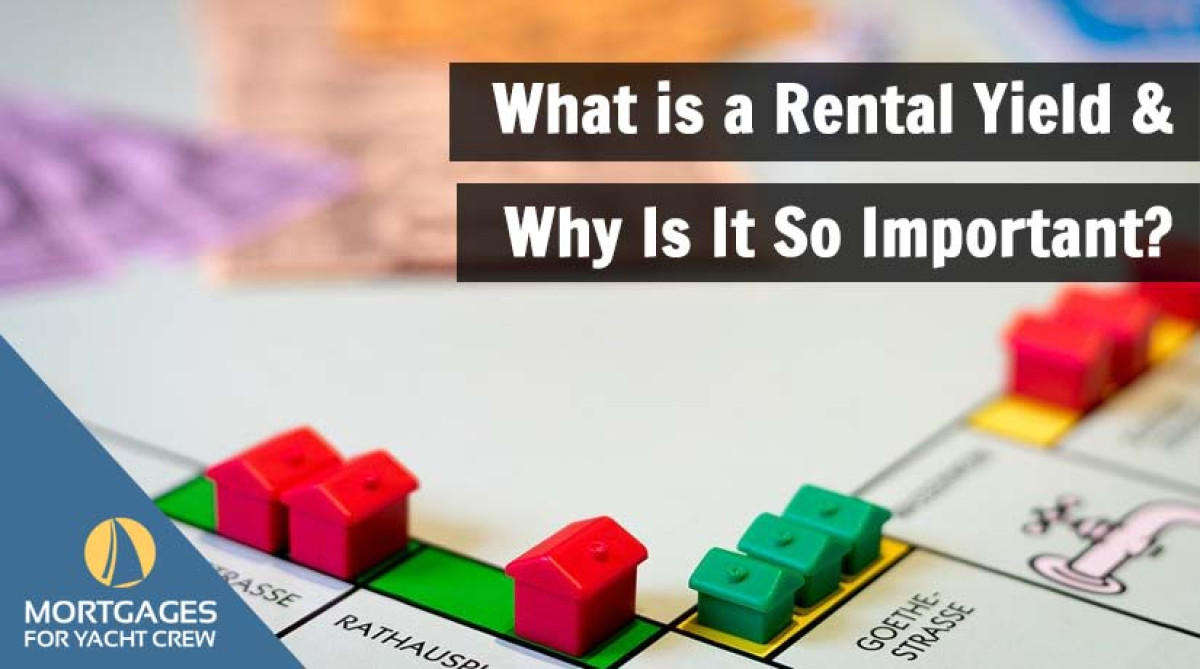What is a Rental Yield & Why Is It So Important?
- Authors
-
-

For budding property investors and those already experienced in the field of investment properties, one of the biggest questions when looking for a suitable investment should be 'what is the rental yield?'
In this article, we explore precisely what rental yields are, how to calculate them and what you should be aiming for as a property landlord.
Read on to find out more or click a jump link below to skip to a chapter that interests you.
Chapters
- What is a Rental Yield?
- Example Calculation
- What Rental Yield Should You Aim For?
- Costs Your Rental Income Should Cover
- What are the UK's Average Rental Yields?
- What Type of Rental Property Achieves the Best Yield?
- What's Needed to Get a Buy-to-Let Mortgage?
- Contact Us
What is a Rental Yield?
In a nutshell, rental yield is the return that you will receive on your property through the rental income.
It is calculated as a percentage, by taking the yearly rental income and dividing it by the purchase price + costs.
It helps you to determine if the property you have shortlisted is right for you.
If you calculate that you will need to charge extortionate rent, or rent beyond the ceiling price of that particular area/property in order to make a return on your investment, then you can rule out that property and look for another with a better return.
The rental income is also an important factor when determining how much a lender will loan to you.
They will always factor this into their calculations.

Example Calculation
If you can rent a property for £500 per month this will give you an annual rental income of £6,000.
If you purchase the property for £95,000 and spend £5,000 on refurbishment costs:
£6000 / (£95,000 + £5,000) x 100 = 6% rental yield.
What Rental Yield Should You Aim For?
You should really be looking at investment properties that will provide a rental yield of at least 5%, with 7-8% being considered 'good'.
Anything lower than this may mean you struggle with cash flow in the property to cover running costs, mortgage payments and any unexpected repairs.
The exception to this is those investors who are more concerned with market growth.
These are generally investors with no or low mortgages (known as low gearing), who can afford to prioritise capital growth over rental yield.
They will often choose prime locations like city centres.
Costs Your Rental Income Should Cover
Your rental income should cover the running costs of the property as well as the mortgage costs (things like landlord insurance.
You should also build in a contingency for those repair and maintenance costs e.g. a new boiler or carpet.
You should also bear in mind that interest rates are historically low, when these return to more 'normal' levels those with yields of 5% or lower may find themselves in trouble.
What are the UK's Average Rental Yields?
With some huge disparities in house prices between the North and the South of the country, it’s no surprise that rental yields fluctuate from region to region.
Currently, the best rental yields are in Nottingham, which achieves and average yield of +12%.
The south generally see’s lower yields because the average property price is higher.
If you are looking to buy an investment property then you should be keeping an eye on RightMove’s house Price Index report, this monitors property asking prices in England and Wales.
They also produce a quarterly rental trends tracker which monitors property rental prices around the UK.

What Type of Rental Property Achieves the Best Yield?
Student lets and HMO’s often see the biggest yields but have other costs that you should factor in like the turnover of the tenancy, additional management costs and higher maintenance costs and the eventual re-sale price could take a hit.
As a seafarer these types of mortgage are also much harder to find, as it’s the more ‘niche’ lenders that offer HMO/student let mortgages (most of which will not lend to seafarers).
With these more 'niche' lenders come much higher interest rates than a regular buy to let mortgage.
What's Needed to Get a Buy-to-Let Mortgage?
If you are looking for a buy to let mortgage, then you will need to consider the below:
- • You can buy an investment property as your first property (you will have to pay stamp duty though)
- • You will need a deposit of 25% (sometimes more, for a new build)
- • The rental income will determine how much you can borrow
- • You will usually have to meet minimum income requirement of £25-30k per year
- • A good credit score will give you a better chance of getting the maximum loan amount
- • The property must be suitable for the lender
Contact Us
Are you a seafarer considering a buy-to-let mortgage application on an investment property?
Then contact us today for a free initial consultation.